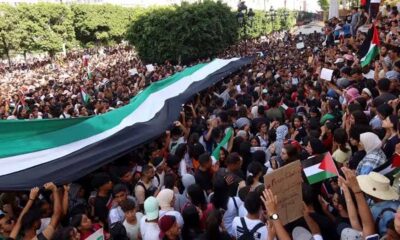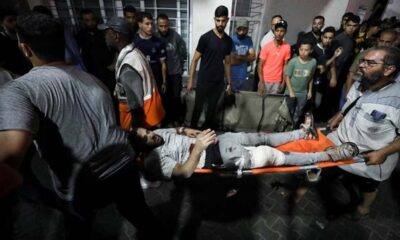International
Mass grave dug at Gaza hospital as humanitarian catastrophe grows
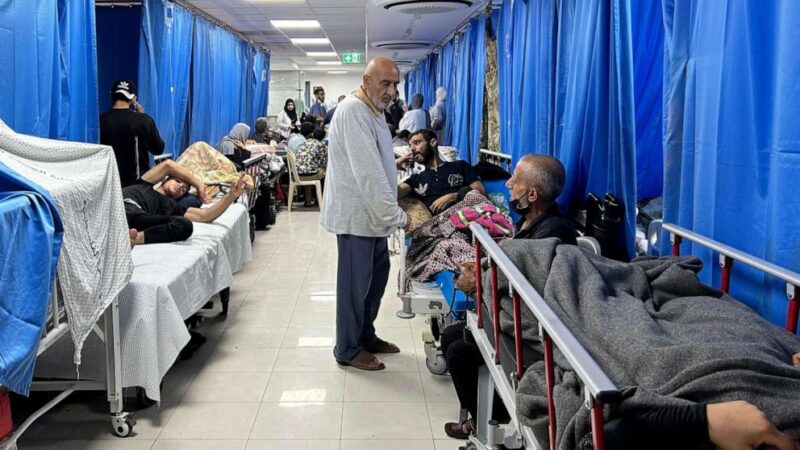
Mass grave dug at Gaza hospital as humanitarian catastrophe grows
The catastrophic humanitarian situation in the Gaza Strip grew worse on Tuesday as much of the focus remained on grim accounts about the state of the collapsed health system after almost six weeks of war between Israel and Gaza’s Hamas rulers.
UN Secretary General António Guterres said he was “deeply disturbed” by the perilous situation at Gaza’s hospitals and, “in the name of humanity,” called for a ceasefire.
Another dire warning came from the UN’s Palestinian relief agency, which said humanitarian operations were grinding to a halt due to the lack of fuel.
In northern Gaza, there was fierce fighting between Israeli soldiers and Palestinian militants around several hospitals.
Attacks on hospitals and a lack of fuel to generate electricity have claimed the lives of several patients in recent days, including newborn babies, according to Palestinian and UN officials.
Around 180 decomposing bodies on the grounds of al-Shifa, the largest hospital in the Gaza Strip, have begun to be buried in a mass grave in a courtyard, according to the Hamas-controlled Ministry of Health.
The account could not immediately be verified.
However, it accorded with descriptions of the situation by the UN’s Office for the Coordination of Humanitarian Affairs, which said on Monday it had heard of about 100 bodies that could not be buried at the hospital.
The World Health Organisation said on Tuesday that al-Shifa Hospital was still in operation, contrary to statements made by health officials at the weekend.
“We call it a functioning hospital because of the heroic efforts of the staff remaining,” WHO spokeswoman Margaret Harris said in Geneva on Tuesday.
Despite the lack of power and attacks, the staff at al-Shifa Hospital are trying everything they can to care for around 700 remaining seriously ill patients. Within the past 24 hours, 20 of those have died, Harris said, referring to figures from the local health authorities.
READ ALSO:
- Avoid political opinion, focus on responsibilities, Oshiomhole urges labour unions
- Barcelona begin European defence with one-sided win
- Telecom sector contributes 16% to Nigeria’s GDP – MTN
The WHO has its own staff in the north of the Gaza Strip, said Harris.
Like the remaining population, they were having problems getting the basic necessities of food and drink.
The al-Shifa Hospital is not only the largest in the Gaza Strip.
Before the recent Israeli attacks, it was also the best-equipped hospital with the most specialised doctors where the seriously ill patients were treated.
Evacuating them would have been difficult even under the best conditions without conflict in the streets, said Harris, but it was impossible in the chaos of the conflict.
In addition, there is no capacity in the south of the Gaza Strip to receive these patients.
“We are begging for a ceasefire,” Harris said.
Street fighting in Gaza City is also preventing emergency workers from responding to calls for help from people trapped under rubble after Israeli bombardments.
People who can no longer get out of their homes and those who need ambulances for the wounded often wait in vain, OCHA reported, citing the Palestinian Red Crescent.
Israel says Hamas is using medical facilities and civilians as “human shields,” with terrorists operating command centres in or under hospitals, including al-Shifa, making them legitimate targets.
On Monday, the Israeli Defense Forces (IDF) said Hamas weapons and explosives were found at al-Rantisi Children’s Hospital after the site was evacuated on Sunday.
Almost 1.6 million of the approximately 2.3 million inhabitants of the sealed-off Gaza Strip have been displaced since the start of the Israeli attacks on October 7.
Many have taken shelter in hospitals.
Israel’s offensive was prompted by massacres carried out by Hamas and other militants in Israel, which killed about 1,200 people.
READ ALSO:
- INEC debunks claims of tampering with Kogi poll results on IReV
- CBN extends validity of old N1000, N500, N200 notes indefinitely
- Nigerian mother of two found dead at home ‘after speaking to her husband, others on phone’
The groups also kidnapped around 240 people and took them to Gaza.
Three people were injured in Tel Aviv on Tuesday after militants in Gaza once again fired rockets at the city. The city was last targeted by rockets from the Palestinian territory on Friday.
The number of Palestinians killed in Gaza has risen to 11,500 since the start of the war on October 7, according to the Hamas-run Health Ministry in Gaza. Some 29,000 people have been injured.
The UN’s main agency in the Gaza Strip said late Tuesday that humanitarian operations were ending due to the lack of fuel.
Israel has not allowed fuel into the territory due to fears it could be used by Hamas fighters.
“The humanitarian response in the Gaza Strip, on which over two million people depend, is gradually coming to an end because no fuel has been allowed into the Gaza Strip since October 7,” UNRWA Commissioner-General Philippe Lazzarini said in a statement.
“It is very simple. Without fuel, the humanitarian operation in Gaza is coming to an end. Many more people will suffer and will likely die,” he said.
The push to free the hostages held by Hamas has made little progress.
The International Committee of the Red Cross said on Tuesday it still had not been granted access by Hamas to see them.
“We have been insisting to see the hostages,” spokeswoman Fatima Sator said in Geneva on Tuesday.
“It is part of our dialogue with Hamas,” she added.
Angry relatives and friends of the hostages are marching almost 70 kilometres from Tel Aviv to Jerusalem, where they are set to arrive on Sunday.
There, they are to march to the official residence of Prime Minister Benjamin Netanyahu, according to organisers.
Only four hostages have been released and one was freed in a military operation.
It is unclear how many of the others are still alive.
Mass grave dug at Gaza hospital as humanitarian catastrophe grows
dpa/NAN.
International
Search for survivors continue as death toll in Myanmar earthquake exceeds 1,600

Search for survivors continue as death toll in Myanmar earthquake exceeds 1,600
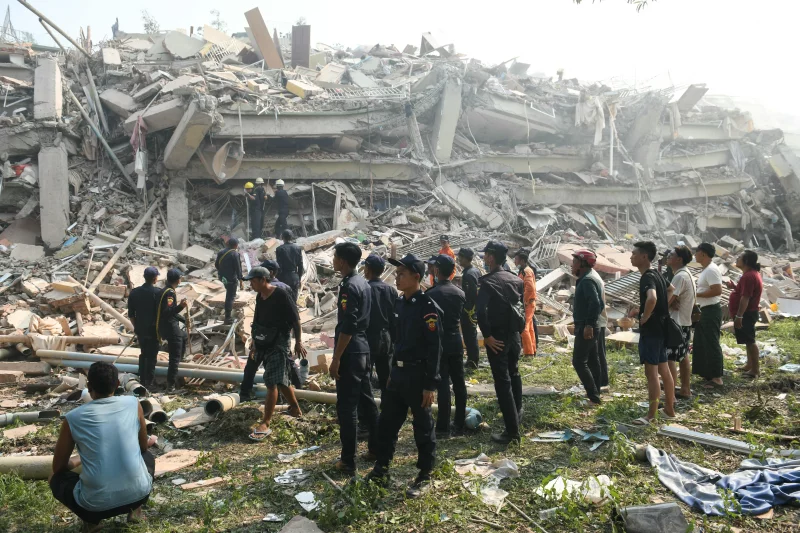
The death toll in Myanmar earthquake hit 1,644, the military government said on Saturday, according to BBC, CNN, Reuters and other reports.
In neighbouring Thailand, where the quake rattled buildings and brought down a skyscraper under construction in the capital Bangkok, at least nine people were killed.
Survivors in Mandalay, Myanmar’s second-biggest city, dug with their bare hands on Friday in desperate attempts to save those still trapped, lacking heavy machinery and with authorities absent.
In Bangkok on Saturday, rescue operations continued at the site of the 33-storey tower’s collapse, where 47 people were missing or trapped under the rubble – including workers from Myanmar.
The US Geological Service’s predictive modelling estimated Myanmar’s death toll could exceed 10,000 and losses could exceed the country’s annual economic output.
A day after making a rare call for international assistance, Myanmar’s junta chief, Senior General Min Aung Hlaing, travelled to hard-hit Mandalay near the epicentre of the quake, which brought down buildings and triggered fires in some areas.
Chairman of the State Administration Council instructed authorities to expedite search and rescue efforts and address any urgent needs,” the junta said in a statement on state media, referring to Min Aung Hlaing.
Airports closed
An initial assessment by Myanmar’s opposition National Unity Government said at least 2,900 buildings, 30 roads and seven bridges had been damaged by the quake.
“Due to significant damage, Naypyitaw and Mandalay international airports are temporarily closed,” said the NUG, which includes remnants of the elected civilian government ousted by the military in a 2021 coup that triggered the civil war.
The control tower at the airport in Naypyitaw, Myanmar’s purpose-built capital city, collapsed, rendering it inoperable, a person with knowledge of the situation told Reuters.
Hospitals in central and northwestern Myanmar were struggling to cope with the influx of injured people, the U.N. Office for the Coordination of Humanitarian Affairs said, warning that damage to roads was hindering access.
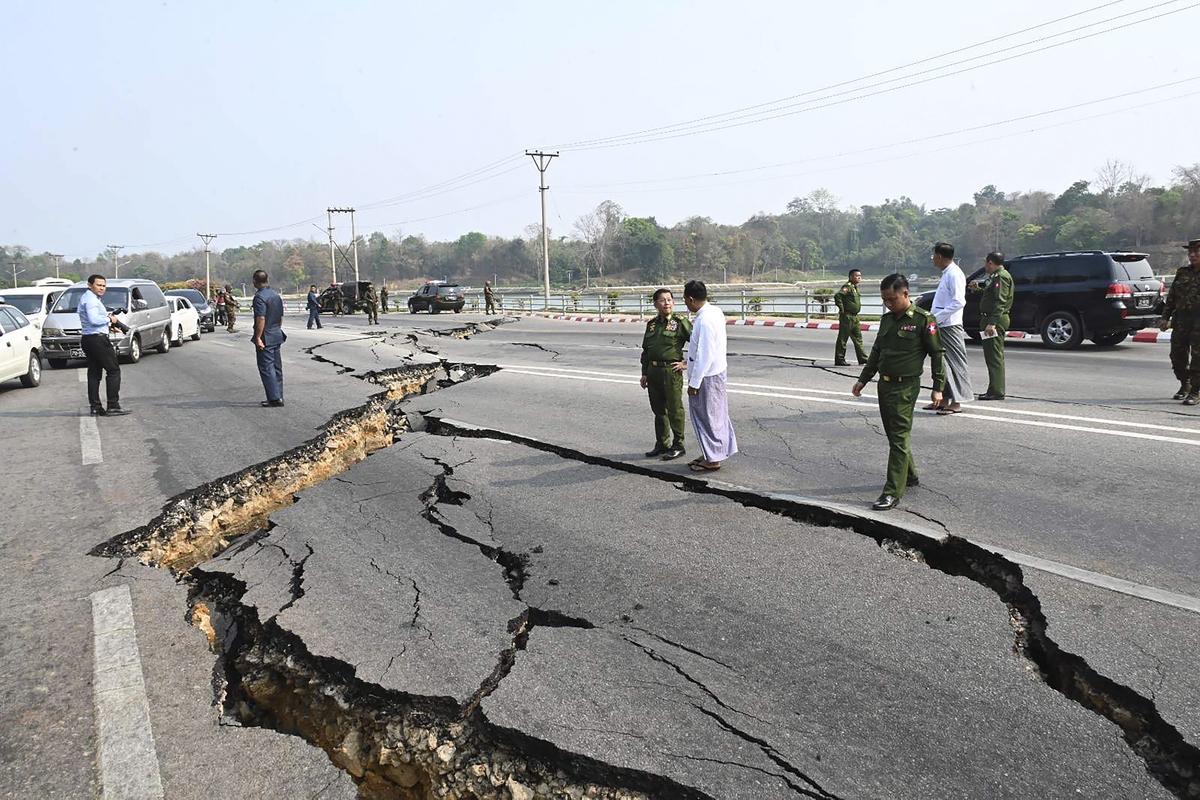
Seventeen cargo trucks of shelter and medical supplies were due to arrive on Sunday to address shortages of medicines, including blood bags and anaesthetics, the agency added.
Chinese President Xi Jinping spoke by phone with the junta chief, China’s embassy in Myanmar said on Saturday, and said Beijing would provide $13.77 million worth of aid, including tents, blankets and emergency medical kits.
The United States, which has a testy relationship with the Myanmar military and has sanctioned its officials, including Min Aung Hlaing, has said it would provide some assistance.
Relief supplies from India on a military aircraft also landed in Yangon, according to Myanmar state media, and India’s government said it was also dispatching ships with 40 tonnes of humanitarian aid.
Russia, Malaysia and Singapore were also sending planeloads of relief supplies and personnel.
International
$100m coin collection buried for decades to be auctioned

$100m coin collection buried for decades to be auctioned
A coin collection, much of which remained buried underground for over 50 years, is expected to surpass $100 million at auction, according to experts.
Named the Traveller Collection, this extraordinary assemblage is believed to be the most valuable coin collection ever brought to auction.
The coins will be sold gradually over the next three years, with the first auction set for May 20.
Beyond its immense value, the collection’s origins make for a fascinating tale.
Spanning over 100 territories and encompassing coins from ancient times to the modern era, the collection is being auctioned by Numismatica Ars Classica.
What sets it apart is that most of the coins remained hidden underground for half a century before resurfacing.
According to a press release shared with CNN, the anonymous collector behind the collection began acquiring gold coins after the Wall Street Crash of 1929.
Over time, he developed “a taste for coins with great historical interest, beauty and rarity” and eventually amassed approximately 15,000 coins.
During the 1930s, he and his wife traveled extensively across the Americas and Europe, acquiring rare and historically significant coins while meticulously documenting their purchases.
READ ALSO:
- EFCC re-arraigns son of ex-PDP chairman for alleged N2.2bn oil subsidy fraud
- Group says Natasha’s recall will deepen democracy
- We welcome Gov Makinde’s U-turn on Shari’ah panel – MURIC
Despite settling in Europe at a time when Hitler’s Nazi party loomed over the continent, the collector sensed the impending danger. In response, he carefully packed the coins into cigar boxes, which were then placed inside aluminum containers and buried underground, where they remained undisturbed for five decades.
Among the collection is a 50 Toman coin, part of an “exceedingly rare” set minted in Tehran and Isfahan during the late 18th and early 19th centuries.
International
AI will replace doctors, teachers, others in 10 years – Bill Gates
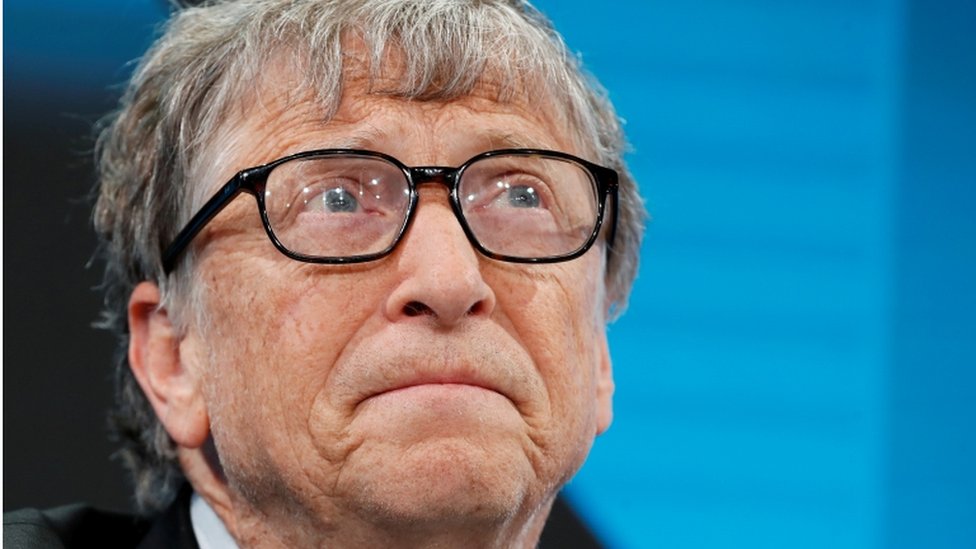
AI will replace doctors, teachers, others in 10 years – Bill Gates
Bill Gates, a co-founder of Microsoft, has claimed that improvements in artificial intelligence (AI) over the next decade may render humans superfluous for the majority of work.
In a recent interview with comedian Jimmy Fallon on NBC’s The Tonight Show in February, the billionaire philanthropist discussed how AI may take over many facets of life and business.
Gates remarked that expertise is currently “rare”, emphasising the continuous reliance on human specialists in industries such as medicine and education.
For example, we continue to rely on highly trained individuals, such as “a great doctor” or “a great teacher”, whose knowledge cannot be simply replaced by AI.
However, “with AI, over the next decade, that will become free, commonplace — great medical advice, great tutoring,” Gates said.
READ ALSO:
- Senate seeks FG’s immediate intervention to slash data prices
- Reno Omokri: Nigeria gives more opportunities than US, Britain, Canada
- Driver remanded for causing Osun varsity students’ death
In other words, Gates believes that the world is entering a new era of “free intelligence”, as he described in a recent interview with Harvard University professor and happiness specialist Arthur Brooks.
According to Gates, this transition will result in rapid breakthroughs in AI-powered technology, making them more accessible and affecting almost every part of our lives.
These breakthroughs will vary from more effective treatments and diagnoses to widely available AI instructors and virtual assistants.
“It’s very profound and even a little bit scary — because it’s happening very quickly, and there is no upper bound,” Gates told Brooks.
The discussion of how humans will fit into an AI-powered future continues.
Some analysts suggest that artificial intelligence will improve human productivity rather than completely replacing labour, hence driving economic growth and creating new jobs.
However, Microsoft AI CEO Mustafa Suleyman cautions that technological improvements in the coming years will disrupt the nature of most occupations across nearly all industries, potentially exerting a “hugely destabilising” influence on the workforce.
AI will replace doctors, teachers, others in 10 years – Bill Gates
-

 Uncategorized1 day ago
Uncategorized1 day agoBreaking: Moon sighted in Saudi, UAE, others, Eid-Fitr holds Sunday
-

 metro3 days ago
metro3 days agoEFCC re-arraigns son of ex-PDP chairman for alleged N2.2bn oil subsidy fraud
-

 metro1 day ago
metro1 day agoRamadan ends in Nigeria, Sultan announces March 30 as Eid-el-Fitr
-

 metro2 days ago
metro2 days agoFubara reacts as Ex-HOS, Nwaeke accuses him of bombing oil pipelines, Rivers Assembly
-

 metro3 days ago
metro3 days agoWe welcome Gov Makinde’s U-turn on Shari’ah panel – MURIC
-

 Opinion2 days ago
Opinion2 days agoBarbaric mass burning of innocents in Edo, by Farooq Kperogi
-

 Uncategorized3 days ago
Uncategorized3 days agoObasanjo’s position on Rivers emergency rule hypocritical, says Presidency
-

 metro2 days ago
metro2 days agoEx-Rivers HoS wife cries for help over husband’s safety





